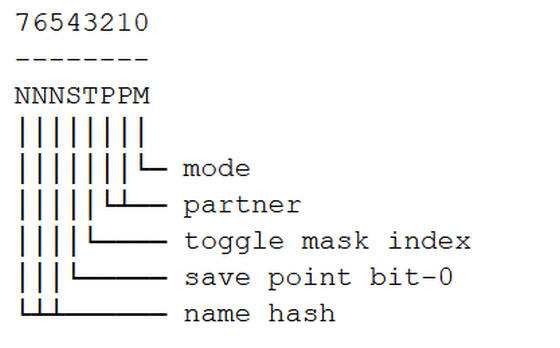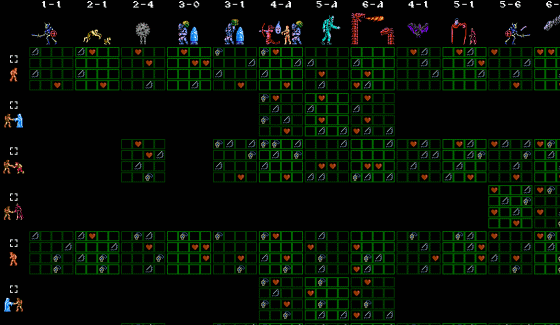How is the password for the masterpiece action game 'Akumajo Densetsu' generated?

Konami's masterpiece action game '
Castlevania III Password Algorithm
https://meatfighter.com/castlevania3-password/
Castlevania III is a stage-clear side-scrolling action game where you can save the progress of the game with a password that fits four types of icons in a 16-square frame, as shown in the image below.

Also, in the overseas version of '

There are four types of information saved by password: 'game progress', 'accompanying partner', 'difficulty', and 'name', and each information is converted to hexadecimal and saved.
'Game progress' is internally divided into 18 levels, and numbers from 00 to 11 are assigned to each level. The images below show the numbers corresponding to each progress.

There are four types of 'accompanied partners': '0: no partner', '1: Cypha', '2: Grant', and '3: Alucard'. Some partners may not be able to accompany you on some stages. The table below shows whether each player can accompany each progress of the game converted to hexadecimal numbers, except for the progress and partner combination that is marked with a cross indicating that it is possible to accompany. Is rejected by the system.

Information about 'difficulty' is represented by either '0: normal' or '1: hard'.
For the 'name' information, convert the character string used in the name to a numerical value using the image below, add 4 to the total value of the numerical value, divide by 8, and save the remainder as a hash value .

In addition, all three types of information other than 'name' are also converted to hash values. After that, the hash values of the four types of information are converted into

Finally, the 8-digit payload hash is encoded into the password according to one of the following three patterns: Since 'Akumajo Densetsu' generates a password including the hash value of the name, when decoding the password, it is necessary to enter the name used when generating the password.

In addition, Meat Fighter has released the code to encode and decode passwords, and on the following page you can see a list of possible passwords with several names including 5 special names.
Castlevania III Password Algorithm

The code for encoding and decoding passwords in Castlevania III: Dracula's Curse is also available on GitHub .
Related Posts:







